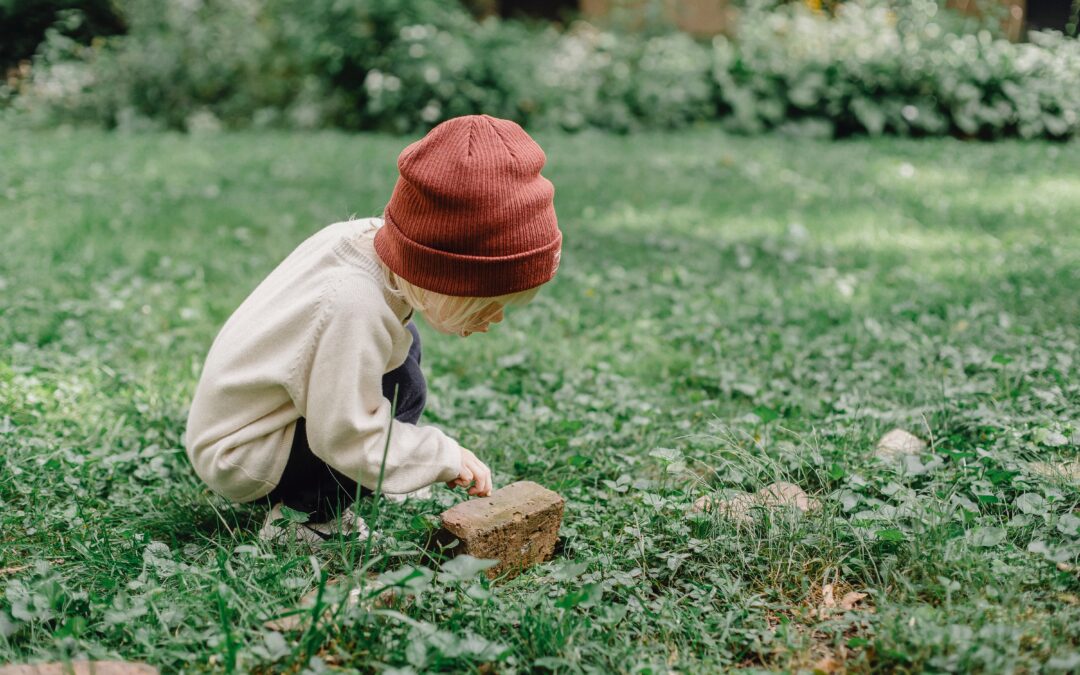STEM (Science, Technology, Engineering, and Math) concepts are a foundation for lifelong learning. At STEMful, we want all children to build confidence in how they navigate the world so they are prepared to solve future problems. The great thing about STEM concepts? Children can learn about them anywhere: in their homes, on walks, in the store, or at the playground.
Here are five STEM concepts children can easily observe in everyday life.
1. Geometric Shapes Are Everywhere
By age three, most children can quickly identify various shapes. But there’s more to learning shapes than matching a shape to its name. Learning about shapes and their properties builds skills that support children’s math education, such as counting, categorizing, and recognizing patterns, among others.
Learning about geometric shapes is one of the easiest STEM concepts children can observe in everyday life because shapes are everywhere! It’s simple to explore shapes wherever you are, with questions such as, “How many sides does the stop sign have?” and “The mirror is a square; how many corners are there?”
The opportunities to learn about shapes are endless.
2. Problem Solving
At STEMful, we see a world where science is the primary tool for helping us assess and solve problems. Problem solving is integral to every STEM subject area and many other areas of life. Of the STEM concepts that children can observe and explore in everyday life, problem solving just might be the most important.
As children encounter challenging situations or scenarios, they can practice solving them with these steps:
- Identifying the problem. “The door won’t open.”
- Talk through potential solutions or actions to take. “The door’s stuck, or perhaps it’s locked.”
- Weigh the possible solutions. “If it’s stuck, we need to get it loose. If it’s locked, we need the key.”
- Pick a solution and try it. “Let’s get the key and see if the door’s locked.”
- Evaluate the outcome. “The key opened the door, the door was locked.”
3. Chemical Reactions
Chemical reactions are constantly happening around us. They are one of the greatest STEM concepts for children to observe and explore every day because of how readily available they are and how much variety lies in the different reactions children can find.
Every time chemicals interact, or, when “compounds or substances undergo a chemical change to form different compounds or substances” a chemical reaction takes place. This doesn’t just happen in a lab! Here are a few examples of chemical reactions we see in everyday life:
- When our bodies digest food and turn it into waste.
- When liquid soap turns into a frothy foam.
- When leaves change colors as seasons change.
- When you disinfect surfaces in your home.
Help children discover chemical reactions by discussing a material’s original state and what it transforms into during a chemical reaction.
4. The World of Numbers
Numbers are the foundation of many STEM concepts, and it’s never too early to help children start developing an understanding of them. Learning, connecting, and relating numbers—known as number sense—is a building block to eventually understanding and practicing basic math skills.
You can help children develop their number sense at every age and stage, starting with identifying numbers and counting and working up to writing numbers. As they grow, they also learn about putting them in order, and eventually arithmetic and other math study areas.
Encourage children to talk about the numbers they see on everyday objects (remote controls, signs, doors, etc.). Take advantage of opportunities to count things (such as how many apple slices they have on their plate or flowers are in a vase). When they’re ready, practice addition and subtraction with items around you. (ex: If they have five toys out and put two away, how many are left?)
5. Language Skills
Communicating effectively is an essential skill to navigating life into adulthood. Language is one of the STEM concepts fundamental to a child’s success, both in school and beyond! It helps children understand the world around them and express themselves productively.
Building language skills allows children to learn how to ask questions, build arguments, articulate findings, and read and write. Engaging with children in back-and-forth conversations is a great way to help them develop their language abilities. Asking them questions and encouraging them to describe what they do and see in their day-to-day lives is a simple but effective approach to support their growth.
A few conversation starter ideas are:
- “What sound are the leaves making when the wind blows through them?”
- “What happened when the ball hit the ground?”
- “Look at those clouds; what shapes do you see?”
Support Your Children’s Learning About STEM Concepts with STEMful
We created STEMful’s STEM education studio to support children in learning the most essential and fundamental education concepts to help them succeed in school and in life. Explore our programs to discover the right STEMful learning opportunities for your family!

